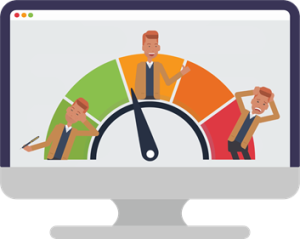
The end of the year often brings with it an increased sense of urgency, which can impact overall health and well-being. Unfortunately, stress is not limited to the fourth quarter. A study by Deloitte revealed that 77% of employees have experienced burnout at their current job, with more than half citing more than one occurrence.
While some pressure is innately part of business and life, it is essential that executives and managers pay attention to their people’s levels of fatigue to avoid the professional and personal challenges that can otherwise arise.
What is burnout?
The World Health Organization defines burnout as:
A syndrome conceptualized as resulting from chronic workplace stress that has not been successfully managed. It is characterized by three dimensions:
- Feelings of energy depletion or exhaustion,
- Increased mental distance from one’s job, or feelings of negativism or cynicism related to one’s job, and
- Reduced professional efficacy.
The definition reinforces the importance of being able to manage workplace stress, which I believe can be viewed from two lenses. To successfully avoid burnout, it’s vital that individuals understand and utilize effective self-management practices and that organizations promote management behaviors that protect employees.
What impact does burnout have?
Fatigue and exhaustion have ripple effects across people, teams and the company as a whole.
Personal Health
If left unaddressed, burnout can significantly impact mental well-being, resulting in anxiety disorders as well as detachment or depression. The effects may also manifest themselves in the body. Burnout has been correlated with a number of medical conditions including insomnia, heart disease and type 2 diabetes. To create a culture where people feel appreciated and valued, it’s clear from the data that mitigating exhaustion is an important priority.
Job Performance
Anxiety also takes a toll on productivity. Fatigue and fear can make it challenging for employees to stay focused, let alone be motivated to contribute at the highest level. It may also impact an individual’s capacity to problem-solve and limit their creativity, as studies have shown positivity correlates with innovation. If multiple people in a team or a company are experiencing significant tension, it is not hard to imagine what this collective decline in work output will do to overall performance.
Employee Engagement & Retention
Consistently high levels of pressure can reduce a person’s energy and elevate a sense of detachment, so it’s natural to see declining employee engagement rates. Research has demonstrated that companies with poor engagement scores earn an operating income that is 32.7% lower than those with more engaged employees. Burnout has also been cited as one of the top reasons behind turnover, which comes at a high price to organizations.
What are the signs of healthy versus unhealthy stress?
Whether someone’s inclination is to consider the impact to people, process or profit, burnout deserves care and consideration. Make it easier for managers and executives to offer their teams support by showing them the signs to look out for.
There is such a thing as good stress. Under positive pressure, people often:
- Feel a burst of energy and motivation
- Heighten their focus and attention
- Have a sense of excitement and nervousness
- Believe the circumstance is doable and surmountable, even if difficult
- Recognize the short-term nature of the situation
Unhealthy stress looks different, and individuals may:
- Lack concentration
- Experience anxiety or exhaustion
- Feel a sense of dread or detachment
- Lose their temper
- Believe that the circumstance is unending
In high pressure situations, I invite people leaders to check in with their staff to get a sense of what they are feeling. Keep in mind that every person will have some experience with unhealthy stress. The key is to uncover when these situations occur and help the employees address the circumstance with additional tools and assistance.
To support staff members across the organization, I recommend using two resources from Emergenetics®.
Resource #1 – Hone Your Habits: Managing Stress
Our short digital course from The egLearning Library empowers learners to identify their natural stress responses, find alignment to their preferred Thinking and Behavioral Attributes and build skill in refining their reactions during times of tension. Click the image below to learn more about the course and the other offerings in our library.
Resource #2 –Manager Toolkit: Battle Burnout
We also have a complimentary toolkit that is designed to help people leaders reduce undue pressure and elevate focus for their employees. The offering provides six activities including individual reflections to establish self-management practices, two coaching exercises to enable prioritization and two team activities to encourage healthy group dynamics.
Remember: managing stress effectively requires both individual capacity and leadership buy-in. By offering tools that empower staff to mitigate tension and help managers promote positive workplace dynamics, leaders will make a difference in the well-being of their people and the professional health of their organization.
Learn more about how Emergenetics can support a positive, productive company culture. Take a look at our website or fill out the form below to speak with our staff today.
 Print This Post
Print This Post


